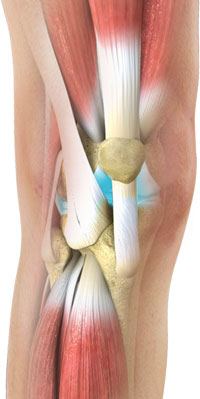Dr. Rice has joined Beacon Orthopedics and Sports Medicine
Congratulations Dr. Rice: 2025 Cincinnati Magazine Top Doctor
Synovectomy

Joint synovectomy is the surgical removal of the synovial membrane, the tissue that lines the joint capsule.
Synovium surrounds the body’s joints and produces synovial fluid to help lubricate the joint enabling smooth movement. In cases of joint disease, the synovium becomes inflamed (synovitis) and produces excess synovial fluid containing an enzyme that can eat away the cartilage on the joint surface leading to bone on bone joint pain.
Synovectomy helps to relieve joint pain and improve the range of motion and ability to function.
Indications
Joint synovectomy is usually recommended by your surgeon when you have a painful disabling joint condition that does not respond to non-surgical treatments such as rest, medications (NSAIDs) or corticosteroid injections, and physical therapy. It is usually indicated in the following conditions:
- Joints affected by rheumatoid arthritis
- Persistent joint pain
- Juvenile chronic arthritis
- Systemic lupus erythematosus (SLE)
- Joint trauma and infection
- Post-infectious monoarthritis
Joint degenerative disorders such as osteoarthritis are an absolute contraindication for joint synovectomy procedure.
Evaluation and Diagnosis
Painful joint conditions should be evaluated by an orthopedic surgeon for proper treatment.
Your surgeon will gather your medical history and perform a physical examination. Diagnostic studies will also be carried out such as:
- X-rays to investigate bony structures of the joint.
- MRI scan to generate images of both bone and soft tissues.
- CT (Computed tomography) scan to evaluate bone in detail which is difficult in a plain radiograph.
Surgery
Joint synovectomy can be performed as an open surgical procedure or arthroscopic surgery under general anesthesia. It is usually performed as an outpatient procedure.
- In the open technique, an incision is made over the affected joint. The joint capsule is exposed and access is gained to the synovial membrane. The lining is removed by scraping and cutting. Incisions are closed with sutures. A dressing pad is applied over the surgical site.
- Arthroscopy is a minimally invasive surgical procedure in which an arthroscope, a small, soft flexible tube with a light and video camera at the end is inserted into the joint to evaluate and treat the deformity.
The surgeon makes a few small incisions around the joint. In one incision, the arthroscope is introduced to view the interior of the joint. The other portals are used for the insertion of surgical instruments to remove the inflamed synovium in the joint. A sterile liquid is infused into the joint to help clear the debris. At the end of the procedure, the arthroscope and instruments are removed and the tiny incisions are covered with a bandage.
Advantages of arthroscopic synovectomy over open synovectomy include:
- Smaller incisions with less scarring
- Minimal soft tissue trauma
- Less post-operative pain
- Lesser infection rate
- Faster healing & recovery
Post-operative care
The post-surgical guidelines to be followed after joint synovectomy include:
- Make sure to get adequate rest.
- Your doctor will prescribe pain medications to help alleviate pain and make you feel more comfortable.
- Limit the use of the affected joint. Activities to be restricted include lifting, carrying, twisting, pushing or pulling.
- You will undergo rehabilitation after surgery to help regain joint function. The duration of rehabilitation depends on the underlying condition, the affected body part, and the health status of the individual.
- Follow your surgeon’s instructions regarding use of Heat and cold modalities to help control pain and swelling.
- Lifestyle and workplace modifications may be recommended by an occupational therapist.
Risks and Complications
As with all surgery, risks and complications can occur. The possible complications following synovectomy include:
infection, bleeding, nerve and blood vessel damage, damage to bone surface, and no relief of symptoms.
Synovium can grow back and may require repeat surgery.
nodisplay
nodisplay
Hip Procedures
- Hip Arthroscopy
- Labral Repair
- Acetabuloplasty (a.k.a. "Pincer takedown")
- Microfracture
- Femoroplasty (a.k.a. "CAM takedown")
- Synovectomy
- Ligamentum Teres Tear Debridement
- Iliopsoas Recession
- Subspine Impingement Decompression
- Endoscopic Abductor Tendon Repair
- Endoscopic ITB Release
- Endoscopic Bursectomy
- Proximal Hamstring Repair
- FAI FAQs
- Ischiofemoral Endoscopic Decompression


